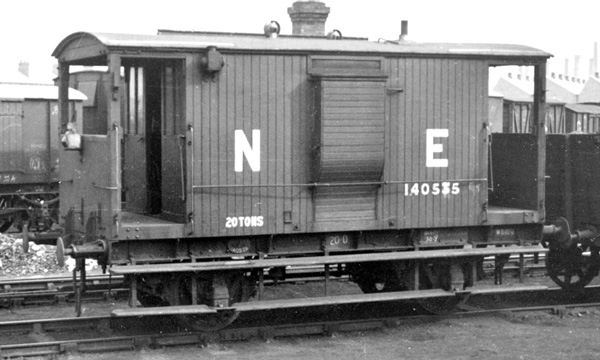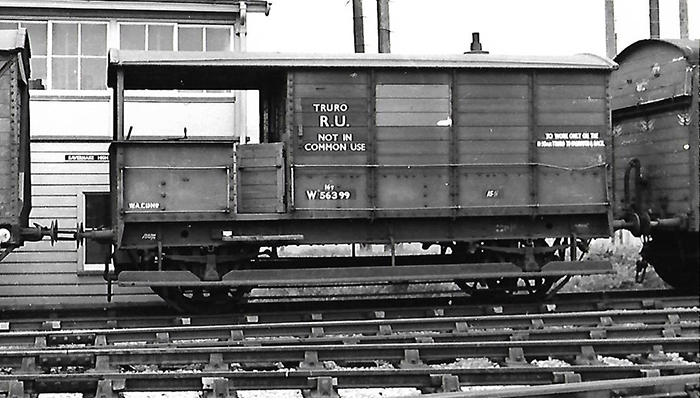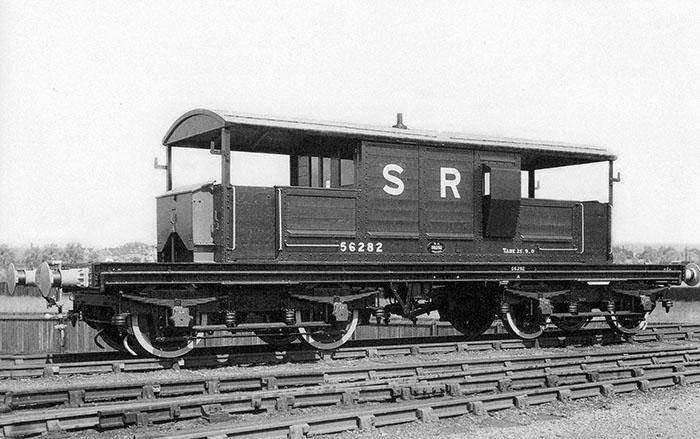


Early LNER brake van.
Before the widespread adoption of goods wagons fitted with automatic brakes, freight trains would have a brake van at the tail end. The brake van was manned by the guard, who would watch over the train from the open ends of the van (GWR Toad Brake Vans only had one open end). The guard’s more obvious job was to apply the block brakes fitted to the wheels of the van at help the driver control the train. On falling gradients this reduction of speed at the rear of the train would stop the wagons gaining momentum behind the locomotive.
The brake itself consists of a wheel, which is turned to screw down the brakes, usually within convenient distance to the open ends of the wagon. This allows the guard to keep a look out while also able to react quickly on the brakes. The braking ability would be facilitated by the weight of the wagon – a sturdy construction usually with cast-iron blocks or other ballast added to the chassis. Because of this, brake vans could be upwards of 20 tonnes in weight.

GWR Toad Brake Van. Note only one open end - thought to minimise drafts in the van.
Control of the brake van was coordinated from the engine. The driver would usually give three short blasts of the train’s whistle to indicate to the guard that the brakes were needed. Careful application of the brakes was required, to avoid the freight wagons suddenly jerking and breaking couplings. The ride condition for guards in brake vans were often terrible – the rigid wheelbase meant that the van would often move violently. Southern Railway introduced bogie-fitted "Queen Mary" brake vans in 1933 for use on express freight trains, which gave a much better ride.

SR Queen Mary Brake Van, with bogies.
The van itself was a small, very plain rest area for the guard. There was a small desk for the guard to work on their paperwork, as well as lockers for shunting poles. A small stove would keep the van warm and give the guard somewhere to heat their meals. The guard would maintain the tail and side lamps, which would indicate the end of the train to other trains and railway staff. Manual brakes were not exclusive to freight trains - Brake coaches performed the same function on passenger trains.
The brake van was used on the British railway system until relatively late – the dieselification of the railways and the introduction of wagons with automatic braking meant that in 1968 British Rail removed the necessity for all freight trains to end with a brake van. By this time most BR locomotive designs included a second cab at the rear, which meant that the guard could sit in this cab to view the train.